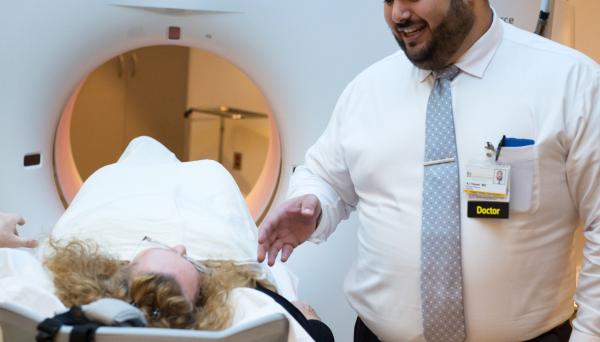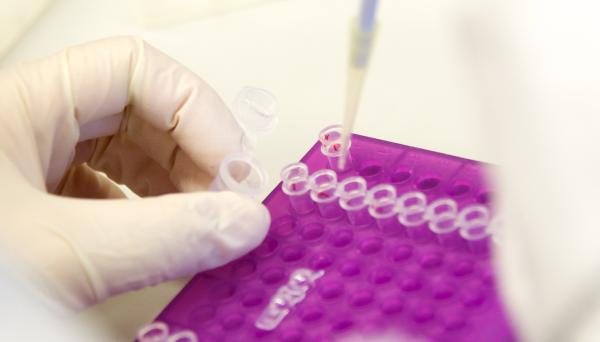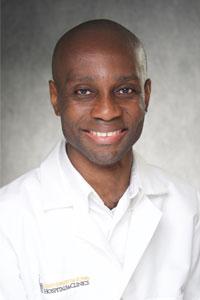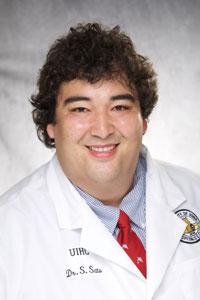Radiology-Diagnostic Residency
At Iowa, you’ll find the complete package for your residency training.
Our training is comprehensive, including pathways for advanced radiology, categorical radiology, and interventional radiology. We’ll help you tailor your program to your interests, with the diverse patients, rich clinical and research resources, and expert mentors you would expect from an academic medical center.
Grow Here
Our programs attract residents who are prepared to maximize their clinical and research training in a high-energy and supportive learning environment.
About the Program
University of Iowa's Department of Radiology excels in its three-part mission to be a leader in teaching, research, and patient care. We offer superior training in all aspects of general and subspecialty radiology, including interventional radiology and nuclear/molecular imaging and therapy.
You’ll benefit from exposure to renowned faculty members who are committed to your growth and development.
We have a strong reputation nationally, built on more than a century of excellence for our training programs.
At Iowa, you’ll find the complete package for your residency training: research, technology, breadth of cases, and outstanding mentor support.
We offer:
-
Structured research time producing high-caliber research.
-
Cases from a broad region, providing a wealth of exposure to common and uncommon conditions.
-
Some of the most advanced imaging equipment available.
-
An environment of support, aimed at your success, while at the same time giving you a high degree of trust and a level of autonomy.
-
You will find Iowa City to be an ideal place to balance the demands of resident training with the comforts and convenience of one of the nation’s most livable cities.
We offer Diagnostic Radiology through either an Advanced 4-year program (starting PGY2) or Categorical 5-year program (including internship starting PGY1).
Core values:
- Patient care
- Medical knowledge
- Communication
- Professionalism
- Lifelong learning
- Wellness
- Equity and inclusion
Our mission is to:
- Prepare our residents to be excellent radiologists who provide efficient exceptional care to their patients by way of outstanding diagnostic skills, communication, and professionalism.
- Foster a love of lifelong learning.
- Promote a spirit of giving and service while maintaining personal wellness.
- Promote equity and inclusion in our department and residency.
We welcome you to learn more about our people and programs.
Accreditation
The Diagnostic Radiology Residency Program at UI Hospitals & Clinics is accredited by the Accreditation Council for Graduate Medical Education (ACGME). Information specific to program requirements for a radiology training program may be found at the ACGME’s Radiology Overview page.
Quick Facts
By the Numbers!
- 7 Diagnostic Radiology residents are accepted each year (3 advanced positions and 4 categorical positions)
- 34 total residents are ACGME approved for our training program
- Large majority of our graduating residents go on to do fellowships
- 60+ faculty members are available to train and mentor radiology residents
- Chief resident (PGY5), rising chief resident (PGY4), and junior chief resident (PGY3) are elected each year
What Other Residencies/Fellowships Do You Offer?
Check out our full list of residencies and fellowships.
Scheduled Areas of Rotation
Residents rotate through all the below areas during the first three years of their residency:
- Body CT, fluoroscopy and MR
- Breast imaging
- Chest
- Head & Neck
- Musculoskeletal
- Neuro CT, MR
- Nuclear Medicine, including PET and cardiac
- Pediatric radiology
- Ultrasound
- Veteran's Administration Medical Center
- Vascular interventional
During their PGY3 and PGY4 years, residents also participate in rotations in education or research. PGY5 residents are allowed, within approved parameters, to select which subspeciality areas they wish to rotate through. These are known as "mini fellowships."
Benefits
- Competitive stipends
- Comprehensive medical, dental, hospitalization and pharmacy benefits for residents and their dependents
- 21 days of annual paid time off
Board Certification Requirements
- Visit the American Board of Radiology for specifics on board certification requirements.
FAQs
Where is Iowa City?
Iowa City is 220 miles directly west of Chicago on Interstate 80. It's also within a 4-5 hour drive to Milwaukee, Madison, Minneapolis, Omaha, Kansas City and St. Louis. It has the cultural, educational, social and political opportunities of a bigger city with the values and ambiance of a Midwestern town. Its clean, safe, nothing is farther than a 15 minute car ride, it has a great city bus system (with bike racks!), wonderful parks, sports, schools and even sailing. Those who have lived here and left, frequently return because what they were looking for was in their own back yard.
How ethnically diverse are the patients?
Like a lot of university towns, we have a large international community. Growing cultural diversity is another reason Iowa City is an interesting place to live. Diversity is embraced and celebrated with city and university events, festivals, clubs and programs. We work hard to recruit and retain minorities with affirmative action policies. About 20% of Iowa Citians are non-white, which is reflected at about the same rate in our patients.
What’s the weather like in Iowa City?
It depends on what you like. For about two weeks every winter it's very cold and windy and for two weeks every summer it's really hot and humid. The rest of the time it's pretty nice. We have a lot of sunny days even in winter-166 per year. Our average snowfall is 28", average rainfall is 35", average temperature in the summer is 72.6 and in the winter, 23.7. We consider our weather character building.
What is there to do in Iowa City when you're not working?
There are 15 different festivals and art fairs, plus concerts and race events. There are many music venues, sports events and neighborhood street fairs and garden walks. We also have a really big mall and several smaller ones, 41 parks, 9 golf courses, 6 public tennis courts, 6 public pools, some lakes and a reservoir with trails, camping and boating. There are bike trails, some famous bookstores, a ton of galleries and excellent museums. There are half a dozen or more performing arts venues including Hancher Auditorium. There's always something going on. Find more information from the Iowa City/Coralville Convention and Visitors Bureau.
What's Iowa City like for kids and families?
There's ice skating, bowling, organized sports, ECHL Heartlanders professional hockey team, 50 public parks, miniature golf, a great public library, a toy library, fun centers, swimming pools and 3 beaches, 9 museums including a children's museum, dance companies and public recreation centers that feature many activities for kids and families at little or no cost. We also have 20 movie screens and 50-licensed daycare providers. The Iowa City schools are perennially ranked among the top schools in the nation. Iowa City is unique in the facilities and services available for individuals with disabilities. Many families who have a family member with a disability are reluctant to leave Iowa City because they cannot duplicate those services in another location.
Are there any job opportunities for my spouse/significant other?
Yes, as of August 2024, Iowa City had an average of 2.7% unemployment. Also, check out University of Iowa Dual Career Services.
What are the fellowship opportunities available?
We currently offer three ACGME accredited fellowships in Pediatric Radiology, Neuroradiology and Vascular Interventional Radiology; and a CAST accredited fellowship in Endovascular Surgical Neuroradiology. We also have four non-accredited fellowships in Breast Imaging, Body Imaging, Musculoskeletal Radiology and PET/CT Imaging.
What's the call schedule like?
Junior residents begin night float duties during their 2nd year. Senior (3rd and 4th year) residents take short call. Over the course of four years of residency, residents will complete a total of 13 weeks of call.
Is this a family friendly program?
Yes! We love children and support residents in their efforts to balance work with family life. We have several dual physician resident and faculty families and understand the stresses. Women residents receive up to 6 weeks of paid maternity leave after delivery. Men get 5 working days off for paternity leave. The house staff health insurance policy provides full coverage for spouses and children. There are several childcare facilities near the hospital and one on-site.
Is there sufficient patient volume so that I can have multiple exposures to a variety of diseases?
Yes. As one of only a few tertiary care hospitals in the region, the Department of Radiology at UI Hospitals & Clinics offers unique imaging services to a broad range of patients from both within and outside the state of Iowa.
| Total | 376,069 |
|---|---|
| Breast Imaging | 20,812 |
| CT | 71,158 |
| MRI | 44,538 |
| Nuclear Medicine | 3,607 |
| PET | 6,877 |
| US | 29,416 |
| X-ray | 199,661 |
Do you have a research project requirement for graduation?
Yes, residents are expected to complete at least one research project during their residency and will present their research at Senior Research Night, which generally occurs in the fall. About 80% of projects are also presented a national meetings.
Do you sponsor visas?
Yes, we sponsor both J1 and H1 visas.
If you have additional questions please contact our program coordinator at glena-clarke@uiowa.edu.
Medical Licensure
Residents must apply for a license to practice in Iowa from the Iowa Board of Medicine at least three months (but no more than six months) prior to the start date of training. Residents are prohibited from practicing in the State of Iowa without proper licensure. For more information, please visit the GME's Medical Licensure website.
Benefits, Stipends and Contracts
Benefits offered by University of Iowa Hospitals & Clinics are competitive with other top training programs in the country. Benefits include:
- Medical, Dental, Hospitalization and Pharmacy Coverage
- Counseling and Crisis Management Services
- Life, Disability, and Malpractice Coverage
- Computer and Software Purchases
- GI Bill
- Paid Time Off and Leave Information
- Reduced UI Tuition
- Retirement Savings
Stipends are also comparable to other top training programs in the country and in keeping with the cost of living in Iowa.
Contracts are issued to house staff each year until training concludes, and promotion at the end of each year is granted based on demonstrated clinical competence and professional growth. House staff members who do not meet standards for promotion to the next level of training may require remedial action, as deemed appropriate by the Program Director.
Supervision and Work Hours
The University of Iowa Hospitals & Clinics Diagnostic Radiology Residency Program ensures that it provides appropriate supervision for all residents, as well as a work hour schedule and a work environment that optimizes quality patient care, fortifies the educational trajectory of house staff members, and addresses all applicable program requirements. On-call duties are necessary components of the UIHC clinical care systems and educational programs; these duties are managed to ensure adequate periods of rest with appropriate levels of supervision to deliver safe, effective patient care. (The terms “resident” or “house staff member” used in this policy shall refer to resident and fellow physicians and dentists at all house staff levels.)
SUPERVISION
The clinical activities of all residents are supervised by teaching staff and/or more advanced house staff members in such a way as to ensure that residents assume progressively increasing responsibility according to each resident’s level of education, ability and experience. The teaching staff determines the level of responsibility accorded to each resident. On-call schedules for teaching staff and more advanced house staff members are structured to ensure supervision is readily available to those on duty. Call is no more frequent than approved by the Radiology RRC of the ACGME. No resident will be on call during their first year of diagnostic radiology residency.
The Diagnostic Radiology Residency Program demonstrates that the appropriate level of supervision is in place for all patients cared for by all residents. These levels of supervision include:
- Direct Supervision – The supervising physician is physically present with the resident and patient.
- Indirect Supervision
i) with direct supervision immediately available – The supervising physician is physically present within the hospital or other site of patient care, and is immediately available to provide direct supervision.
ii) with direct supervision available – The supervising physician or dentist is not physically present within the hospital or other site of patient care, but is immediately available by means of telephonic and/or electronic modalities, and is available to provide direct supervision.
PGY 1 residents are supervised either directly or indirectly with direct supervision immediately available while they acquire basic knowledge and skills specific to the specialty. Activities of PGY 2 residents and above are supervised by any level of supervision, as appropriate to the patient situation and resident capability. Supervision does not equate merely to the presence of more senior physicians nor with the absence of independent decision making on the part of residents. These supervision standards encompass the concepts of graded authority, responsibility and conditional independence that are the foundation of delegation of authority to more senior house staff members. Should the resident ever need more assistance and information, they may contact the senior resident, fellow, or faculty on call.
WORK HOURS
Residents work hours are monitored by the Program Director/Associate Program Directors, Chief Residents and Program Coordinator by means of a work hour record on MedHub that residents are expected to be completed weekly. The work hours for day and night duty on all rotations are designed such that hours worked will fall within the ACGME rules for resident work hours: no more than 80 hours per week when averaged over 4 weeks; one day off in seven when averaged over 4 weeks; post call, residents are excused by 1100 on the post call day if on an in-patient service, and 0730 following check out if on an outpatient rotation unless they have their continuity clinic that morning; there is at least a 10 hour period free of clinical duty between shifts.
All residents will report any concerns about resident hours directly to the Program Director/Associate Program Directors or via rotational evaluations solicited at the end of every rotation.
Specific work hour requirements are as follows:
1. MAXIMUM HOURS OF WORK PER WEEK: Clinical and educational work hours must be limited to no more than 80 hours per week, averaged over a four-week period, inclusive of all in-house clinical and educational activities, clinical work done from home, and all moonlighting. The weekly maximum shall include time spent for administrative duties related to patient care, the transfer of patient care, scheduled academic activities such as conferences, research related to the program, and any time the resident spends on-site after being called in to the hospital. Not included in the weekly maximum is time spent outside of UIHC (or outside another institution related to the program’s academic purposes) for academic preparation, reading, and studying.
Residents must be scheduled for a minimum of one day in seven free of clinical work and required education (when averaged over four weeks).
2. MAXIMUM WORK PERIOD LENGTH:
- PGY 1 residents – clinical and educational work periods for residents must not exceed 24 hours of continuous scheduled clinical assignments. Up to four hours of additional time may be used for activities related to patient safety, such as providing effective transitions of care, and/or resident education. Additional patient care responsibilities must not be assigned to a resident during this time
- PGY 2 and above residents – no schedule shall exceed a maximum of 24 hours of continuous duty in the hospital, with no more than 4 additional hours used for any transitional activities (i.e. maintaining continuity of medical and surgical care, transferring patient care, or attending educational sessions).
- In no event shall the PGY 2 or above resident accept a new patient (any patient for whom the resident has not previously provided care) during this 4-hour extension period.
- PGY 2 or above residents must not be assigned additional clinical responsibilities after 24 hours of continuous in-house duty.
- In unusual circumstances, PGY 2 and above residents, on their own initiative, may remain beyond their scheduled period of duty to continue to provide care to a single patient. Justifications for such extensions of duty are limited to reasons of required continuity for a severely ill or unstable patient, academic importance of the events transpiring or humanistic attention to the needs of a patient or family. Residents must appropriately hand over the care of all other patients to the team responsible for their continuing care.
- Any resident exceeding maximum work period lengths will document their justification in the institution’s resident management system (i.e., MedHub)
3. MAXIMUM FREQUENCY OF OVER-NIGHT IN-HOUSE ON-CALL DUTIES: In-house call must not be scheduled more frequently than every third night when averaged over a 4-week period.
4. MAXIMUM FREQUENCY OF IN-HOUSE NIGHT FLOAT: Night float must occur within the context of the 80-hour and one day-off-in-seven requiremen.
5. MANDATORY TIME FREE OF WORK CLINICAL WORK AND EDUCATION: Residents should have eight hours off between scheduled clinical work and education periods. Residents must have at least 14 hours free of clinical work and education after 24 hours of in-house call. Residents must be scheduled for a minimum of one day in seven free of clinical work and required education (when averaged over four weeks). At-home call cannot be assigned on these free days.
6. MINIMUM TIME OFF BETWEEN SCHEDULED WORK PERIODS: Based on the level of the resident, there are identified levels of time off between scheduled duty periods.
- PGY 1 residents – should have 10 hours, and must have 8 hours, free of duty between scheduled duty periods.
- Intermediate level residents (as defined by the program’s RRC) – should have 10 hours, and must have 8 hours between scheduled duty periods. They must have at least 14 hours free of duty after 24 continuous hours of in-house duty.
- Final year residents (as defined by the program’s RRC) – can participate in transition to practice activities when they are preparing to care for patients over irregular or extended periods. It is still desirable that these residents have 8 hours free of duty between scheduled duty periods, but there may be circumstances where residents must stay on duty to care for their patients or return to the hospital after shorter intervals.
- The Program Director monitors time off between scheduled duty periods.
7. HOME CALL: Residents returning to the hospital from home call must count their time spent in the hospital towards the 80-hour maximum weekly hour limit. The frequency of home call is not subject to the every-third-night limitation but must satisfy the requirement for 1 day in 7 free of duty, when averaged over 4 weeks.
- Home call activities must not be so frequent as to preclude rest and reasonable personal time for each resident.
- Residents are permitted to return to the hospital while on home call to care for new or established patients. Each episode of this type of care, while it must be included in the 80-hour weekly maximum, will not initiate a new “off-duty period.”
Moonlighting
Moonlighting is governed by the Moonlighting Policy and Procedures for House Staff Physicians and Dentists. All requirements of that policy must also be followed, including visa and license requirements. We allow moonlighting as long it does not exceed the work hours. Residents are required to report their hours on MedHub. It should be noted:
- Moonlighting is never required and must not interfere with the ability of the resident to achieve the goals and objectives of the educational program.
- The resident must obtain permission of his/her Program Director prior to the beginning of such activities. All approved requests must be filed with the GME Office.
- Time spent by residents in internal and external moonlighting must be counted toward the 80-hour maximum weekly hour limit. Failure to completely document all time in moonlighting activities will result in suspension of the moonlighting privilege.
- PGY 1 residents are not permitted to moonlight.
The Diagnostic Radiology Residency program meets the requirements of this policy as well as any applicable standard set by the ACGME, the appropriate RRC, or other accrediting or certifying body. This policy is distributed by the GME Office to all GME employment contract holders. The Diagnostic Radiology Residency Program also distributes this policy annually the first week of July to residents, fellows and faculty. The residency program monitors resident work hours with a frequency sufficient to ensure compliance with this policy and the ACGME/RRC/other accrediting or certifying body’s rules.
PGY1 Intern Year
REQUIRED ROTATIONS
During the internship year residents learn about pathophysiology and clinical management through a large array of subspecialties on the front lines of an acclaimed tertiary academic medical center. Residents work closely with clinicians they will go on to serve from a radiology standpoint later in their training. The year is comprised of thirteen total rotations, including two rotations in radiology in the chest and pediatric subspecialties. Every four weeks residents rotate through the following areas:
- Family Medicine - Inpatient
- Emergency Medicine
- Internal Medicine - Inpatient
- Neurology - Inpatient
- Neurosurgery
- Orthopedics
- Otolaryngology - Inpatient
- Pathology
- Radiology - Chest
- Radiology - Pediatrics
- Radiation Oncology
- Surgical Intensive Care Unit - Inpatient
- Trauma Surgery - Inpatient
CALL RESPONSIBILITIES AND VACATION
Residents share in call responsibilities during a minority of their rotations. Residents have 15 weekdays of vacation (3 weeks). Vacation may not be taken on the following rotations: Trauma, Internal Medicine, Neurology, Surgical ICU.
IN-HOUSE CONFERENCES
Residents will attend conferences that are part of each clinical rotations. Residents are encouraged, but not required, to attend radiology educational conferences.
CONTACT WITH THE RADIOLOGY PROGRAM
Categorical interns spend most of the year outside the radiology department. However, the radiology program has an open-door policy and is dedicated to ensuring that residents have a successful and fulfilling year. Informal check-in sessions will occur at least twice per year for interns. Several informal "Women in Radiology" luncheons will be held throughout the year which female interns are encouraged to attend.
PGY2 Year
REQUIRED ROTATIONS
During PGY2 year, residents are introduced to all radiology subspecialties required for certification by the American Board of Radiology (ABR). Every three weeks residents (all years) rotate through one of the following clinics where they will learn to identify anatomical structures and disease processes, as well as learn about specific imaging modalities:
- Body CT
- Body Fluoro
- Breast imaging
- Chest
- Head & neck
- Musculoskeletal
- Neuro CT, MR
- Nuclear medicine, including PET and cardiac
- Pediatric radiology
- Ultrasound
- Vascular interventional
- Veteran’s Administration Medical Center
CALL RESPONSIBILITIES
No call responsibilities during the PGY2 year.
IN-HOUSE CONFERENCES
In addition to clinical rotations, residents will also attend morning and noon conferences, interdisciplinary conferences, Journal Club, and guest lectureships.
STATE/NATIONAL CONFERENCES
- Iowa Radiologic Society annual meeting (expected attendance) - conference fees paid for by department
- Radiologic Society of North America annual meeting (must attend at least twice during residency)
ADDITIONAL REQUIREMENTS
- Begin working on Physics Modules in preparation for the board exams
- Maintain a case/procedure log
EXAMINATION REQUIREMENTS
- ACR In-Training Exam (January/February)
- Rotation exams
PGY3 Year
During the PGY3 year, residents will continue to rotate through the subspecialty clinics every three weeks and participate in education (medical student teaching) and research rotations.
CALL RESPONSIBILITIES
PGY3 residents begin taking junior call. Call responsibilities occur on 5-8 weekday shifts, blocks of 7 nights (night float), and rotating weekends, dispersed throughout the year. All junior call will be covered by the PGY3 class.
IN-HOUSE CONFERENCE REQUIREMENTS
- Morning conferences
- Noon conferences
- Journal clubs
- Interdisciplinary conferences
- Visiting lectureships
STATE/NATIONAL CONFERENCES
- Iowa Radiologic Society annual meeting (expected attendance) - conference fees paid for by department
- Radiological Society of North America annual meeting (must attend at least twice during residency)
ADDITIONAL REQUIREMENTS
- Physics Modules
- Maintain a case/procedure log
EXAMINATION REQUIREMENTS
- ACR In-Training Exam
- Rotation exams
PGY4 Year
CALL RESPONSIBILITIES
Continue rotating through subspecialty clinics every three weeks. PGY4 residents will also start taking senior call. They will be responsible for reading more complex imaging studies, such as ultrasound, abdominal CTs, and MRI. Call responsibilities for senior call will be split between the PGY4 and PGY5 classes.
IN-HOUSE CONFERENCE REQUIREMENTS
- Morning conferences
- Noon conferences
- Journal clubs
- Interdisciplinary conferences
- Visting lectureships
STATE/NATIONAL CONFERENCES
- Iowa Radiologic Society annual meeting (expected attendance) - conference fees paid for by department
- Radiologic Society of North America annual meeting (must attend at least twice during residency)
- American Institute for Radiologic Pathology (required) - tuition paid for by department plus a stipend given to residents attending in person
ADDITIONAL REQUIREMENTS
- Complete Physics Modules
- Maintain a case/procedure log
- Complete a systems-based practice project
- Present article for journal club
- Participate on a department committee
EXAMINATION REQUIREMENTS
- ABR core exam (end of PGY4 year)
- Rotation exams
PGY5 Year
Residents are allowed, within approved scheduling parameters, to select the subspecialty areas they wish to rotate through during their 4th year of residency. These are known as "mini fellowships." Six months will be mini fellowship assignments, 3 months will be floating rotational coverage, and 3 months will be dedicated to making sure breast imaging and nuclear medicine requirements are fulfilled.
CALL RESPONSIBILITIES
Residents continue to take senior call. Senior call coverage will be split between the PGY4 and PGY5 classes.
IN-HOUSE CONFERENCE REQUIREMENTS
- Morning conferences
- Noon conferences
- Journal clubs
- Interdisciplinary conferences
- Visiting lectureships
- Mock Boards
STATE/NATIONAL CONFERENCES
- Iowa Radiologic Society annual meeting (attendance expected) - conference fees paid for by department
- Radiologic Society of North America annual meeting (must attend at least twice during residency)
ADDITIONAL REQUIREMENTS
- Maintain a case/procedure log
- Present article for journal club
- Present research project at senior research day
EXAMINATION REQUIREMENTS
- Rotation exams
Research Opportunities
Different from many residency programs, ours will immerse you in research that's informed by your own curiosity and passion. You’ll not only have the support of a faculty mentor, but the laboratory, imaging, and computing resources of a major academic medical center.
All residents are expected during their residency to participate in and complete a research project. Residents are provided a scheduled research rotation and flexible research days to aid in completion of this requirement. During this time, the resident is expected to identify an area of research of personal interest and develop, carry out and complete a research project under the guidance of a mentor.
Resident Research Day
The research experience culminates in a presentation at Senior Research Day, typically held in early spring each year. This symposium, attended by faculty and residents, provides the resident the opportunity to present and discuss their research project in a collegial environment. The department presents an award to the best research project of the year. Many residents take advantage of departmental support to present their research projects at national meetings and/or submit to journals for publication.
Research Seminar Series
Every month the residents are exposed to ongoing research projects in the department at the In-Sights in Imaging lecture series. Many of the clinical and basic science researchers give overviews of their research topics and outcomes. This allows the residents to gain more exposure to current and future departmental research that they otherwise might be unaware of.
Journal Club
All residents participate in a monthly journal club to discuss relevant radiology journal articles. Working with a representative staff member from each section in the department, two journal articles are presented per meeting, one by a PGY4 resident and one by a PGY5 resident.
Research Funding
The Department of Radiology maintains a Resident Research Fund that residents can apply for. The funds are disbursed by the Radiology Resident Research Committee. Additionally, there are some other potential sources of funding available through the Carver College of Medicine and the Graduate Medical Education office.
Learn more about our department's research.
Hands-On Training
The amount of hands-on training has always been a strong attribute of the University of Iowa Hospitals & Clinics radiology residency program. Resident participation in performing interventional procedures has long been a standard operating procedure in our program. We take pride in knowing that all of our residents, even from the beginning of their training, actively participate in the performance of radiologic procedures.
The Division believes strongly that residents learn best by doing rather than by observing. All residents, even the most junior, are expected to assume an active role in patient care and performing all types of interventional procedures, increasing in complexity commensurate with their level of training and confidence. Upon completion of their training, our residents will have been exposed to all types of radiologic procedures and will be expected to demonstrate competence in performing percutaneous biopsies, drainages, and basic vascular and nonvascular procedures. Additionally, the VAMC provides an excellent arena for residents to broaden their interventional experience.
Call Responsibilities
The resident call pool is broken down into two groups: junior call and senior call. Junior call is covered by the PGY3 class, and senior call is split between the PGY4 and PGY5 classes. A junior and a senior are always on call together. Call shifts include: 5-8 weekday shifts, 8 pm to 8 am night float shifts which are done in 7 day blocks, and day time weekend shifts.
Graded call responsibilities for junior and senior call are defined by the program.
Education and Conferences
Noon Conference
Formal resident teaching occurs daily at noon conferences, which provides instruction in radiologic imaging and principles in a structured, organized manner. Conference blocks are assigned to division focusing on introductory/ intermediate topics from July- Dec and advanced topics, mock boards, and call prep lectures in the Jan- June blocks. These conferences are subspecialty-based and given by faculty members.
The noon conferences are based on a two-year curriculum, to ensure that all residents have an opportunity to be exposed to information critical to their training twice during their residency. Attended by both residents and faculty members, this conference is critically evaluated by our residents for both content and quality. The Noon Conference is supplemented with frequent guest lecturers, which provides residents and faculty with the opportunity to hear nationally and internationally recognized radiologists. The Department typically has one visiting guest lecturer per month.
Morning Conference
Morning Conferences are held on Mondays and Wednesdays and are case-based conference to allow all the residents to be exposed to a wide variety of cases. Although more informal than the Noon Conference, case conferences provide an additional means to assure that residents cover specific topics relevant to the subspecialty areas through which they rotate.
Beyond Your Residency
Our residents have many choices available to them following their residency training.
Our department excels in placing residents in subspecialty training in competitive fellowships here and around the country. Our training pathways in advanced radiology, categorical radiology, and interventional radiology prepare you for opportunities that cover the spectrum of our discipline.
Our residents who elect to go into practice directly find rewarding opportunities available to them, in all parts of the country, and in exciting places globally.
Curriculum and Clinical Rotations
The residents' rotation schedule is predicated upon the eleven subspecialty areas tested on the oral ABR examination. As such, all residents rotate through all subspecialty areas several times by the time they have completed their residency. The structure of the training program assures that all residents spend months in dedicated rotations in ultrasound, CT, MRI and interventional radiology.
These rotations are structured so that resident experiences and responsibilities are focused specifically on these imaging modalities. Additional CT and MRI experience is gained through neuroradiology, head and neck imaging, chest, cardiovascular, musculoskeletal, body MR, and pediatric rotations. At least four months of nuclear medicine and PET imaging is also obtained to complete their training.
During the four-year training period, residents assume greater responsibility in monitoring, performing, and interpreting radiologic examinations of increasing complexity, commensurate with their confidence level and experience.
Rotation curriculum readings for self-study are hosted through the University of Iowa Hardin Library.
Dedicated Training in Nuclear Medicine
All residents complete at least 4 months of dedicated nuclear medicine training that includes experience in diagnostic nuclear medicine and PET, radionuclide therapy and theranostics, hands-on lab and technologist workflow experience, and numerous case conferences and didactics.
Radiology Pathology
Radiologic-pathologic correlation is provided through the American Institute of Radiologic Pathology (AIRP), which is required of all of our residents. The department pays the tuition ($1500) and a $3000 stipend if the resident attends in person.
Veteran's Administration Medical Center Rotation
Residents rotate through nuclear medicine, general radiology, and interventional radiology at the Veteran's Administration Medical Center (VAMC). Residents rotating through the VAMC are supervised by full-time staff radiologists. All radiologic examinations and procedures performed by our residents at the VAMC are under the direct supervision and guidance of faculty members.
Innovations
Our Traditions
Over the years, members of the University of Iowa Department of Radiology have been responsible for some of the world’s firsts in diagnostic and interventional imaging. Our environment encourages innovative thinking, which has attracted a core of physician scientists, pushing the boundaries of our understanding of disease in order to better diagnose and treat it.
Our Technology
We work in one of the nation’s “Most Wired” hospitals—a distinction we’ve earned over the past decade. Our numbers of imaging services provided each year are staggering.
Our Care
We hold the country’s highest designation for several of our clinical services, a testament to the vision and dedication of our faculty care givers. In some cases, we’ve written the criteria for credentialing programs around the country to deliver effective treatment for complex conditions.
Our Goal
Changing Medicine. Changing Lives. We change medicine each day by asking the difficult “what if” questions. In doing so, we bring better outcomes for hundreds of lives each day. We prepare our residents to be compassionate and innovative healers and discoverers and invite them to join us on this quest to improve the human condition.
Library and Other Resources
Radiology Library
The Department of Radiology maintains its own departmental library, which houses over hundreds of hard-cover books. Most materials needed for resident rotations are available from the Radiology Library for checkout. Additionally, residents have access to a large collection of online books and journals through the University's library system.
The Radiology Library is also equipped with 10 computer stations, a scanner, and photocopier. A friendly, on-site librarian is happy to help you locate the information you need. Residents can also suggest resources for library purchase.
Hardin Health Sciences Library
Hardin Library is the University's premier health sciences library. It is conveniently located within a few minutes' walking distance of the Department of Radiology and houses many books not owned by the Radiology Library. In addition to its extensive print and online book/journal collection, it also provides access to many useful databases including:
- UpToDate
- MD Consult
- Web of Science
- Embase
- Scopus
- STAT!Ref
- DynaMed
- Board Vitals
- ClinicalKey
Other Resources
Radiology residents are also given access to STATdx, RadPrimer, and e-Anatomy.
How to Apply
Apply using the Electronic Residency Application Service (ERAS) and register with the National Resident Matching Program (NRMP).
Beginning in October, we will interview over 120 candidates for 7 DR positions and 1 DR/IR position.
We accept applications until Oct. 14, 2024.
Individual applications are reviewed only after they are complete.
Required Application Materials
- Completed ERAS application, including personal statement and photo
- Medical school transcript
- 3 letters of recommendation
- Dean’s letter from medical school [available on November 1, applications will be considered complete pending the Dean’s Letter]
- USMLE transcript
- If a foreign medical school graduate, your VQE or ECFMG transcript
We welcome applicants who will graduate from qualified medical school programs in this country or abroad. Please note our eligibility criteria.
For more information, please contact your Dean’s office or ERAS or, if a foreign medical school graduate, contact the Educational Commission for Foreign Medical Graduates (ECFMG).
Deadline
All application materials must be completed by October 14, 2024. Only completed applications will be reviewed.
Criteria for Candidacy
U.S. Allopathic Medical School Graduates
- Application via the Electronic Residency Application Service (ERAS) including:
- A minimum of three letters of recommendation
- Dean’s letter
- Medical school transcript verifying appropriate medical education to train in a large teaching hospital
- Personal statement (there are no specific requirements for the personal statement but in general it should explain why you are interested in a radiology residency and justify why you would be a good candidate)
- Photograph
- “Chairman’s Letter" not required
Osteopathic Medical School Graduates
- Application via the Electronic Residency Application Service (ERAS) including:
- A minimum of three letters of recommendation
- Dean’s letter
- Medical school transcript verifying appropriate medical education to train in a large teaching hospital
- Personal statement (there are no specific requirements for the personal statement but in general it should explain why you are interested in a radiology residency and justify why you would be a good candidate)
- Photograph
- “Chairman’s Letter” not required
International Medical School Graduates
- USMLE Step 1 and Step 2 scores must be available before you can be considered for an interview
- Passing grade on the CSA or USMLE Step 2 CS on the first attempt
- Appropriate medical education to train in a large U.S. teaching hospital
- Previous radiology residency experiences, observership or clinical experience in the U.S. is strongly preferred
- Previous degree in U.S. (e.g, MPH) is also desirable
- US citizenship, J-1 or H-1 Visa
- Application via the Electronic Residency Application Service (ERAS) including:
- A minimum of 3 letters of recommendation
- Dean’s letter
- Medical school transcript verifying appropriate medical education to train in a large teaching hospital
- Personal statement (there are no specific requirements for the personal statement but in general it should explain why you are interested in a radiology residency and justify why you would be a good candidate)
- Photograph
- “Chairman’s Letter” not required
Couples Match
The Department of Radiology encourages couples match applications. We will work in conjunction with the corresponding department to attempt to streamline interview dates and times for both applicants. More information on couples matching can be found on the NRMP website.
The Interview
I got an interview! Now what?
Virtual Interviewing Information for the 2024-2025 Interview Season
We are working hard to ensure that you will still have an informative, interactive and enjoyable time with us learning about our program.
Your virtual visit to the University of Iowa Hospitals and Clinics be held entirely via Zoom.
The interview day will include:
- A welcome and program overview with our program director, Dr. Catie Metz
- A series of 15-minute personal interviews with our program directors, an associate program director, an IR faculty and a chief resident
- Residents and applicants - Zoom breakout session to ask any outstanding questions
- Joining our residents and faculty at our daily noon conference.
- A final wrap-up before signing off.
Those interested in Interventional Radiology (IR)
Applicants applying for interventional radiology will spend additional time with the interventional faculty and residents for an overview of the IR residency, tour of the IR suites, and to ask questions.
Our People
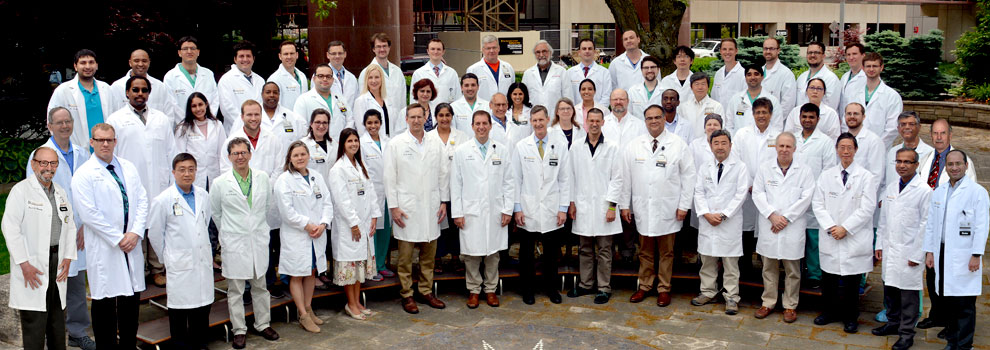
Our faculty members make up a department rich in tradition and long on talent in our important mission of teaching, caring, and discovering new understandings in medicine. As teachers and mentors, our goal is to bring out your best as a physician.
Your fellow residents are, just like you, dedicated to rewarding and meaningful careers in the practice of medicine. They come to Iowa from around the world, drawn here by a comprehensive training program, outstanding work environment, and the prospect of practice opportunities and further training afforded by their experiences here.
Our patients are also part of the training equation. They come to University of Iowa Health Care to receive the very best care from experts who are passionate about delivering it in a personable way. As Iowa’s only academic medical center, we see a comprehensive mix of challenging cases and have the privilege to work with many cultures and languages.
One of the best ways to get familiar with a residency program is to hear what our current residents have to say about their experiences.
Our residents would welcome hearing from you directly, via email or through social media.
Learn more about our people.
Residency Program Leaders
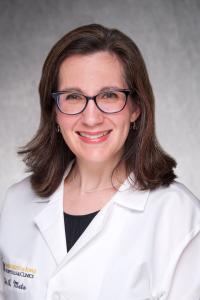
Clinical Associate Professor
Director of Diagnostic Radiology Residency Program
Clinical Assistant Professor
Associate Director of Diagnostic Radiology Residency Program
Curriculum Director
Clinical Associate Professor
Associate Director of Diagnostic Radiology Residency Program
Recruitment Director

Clinical Associate Professor
Associate Director of Diagnostic Radiology Residency Program
Projects Director
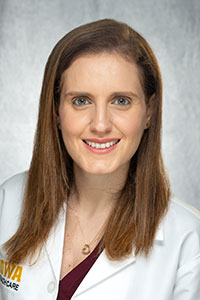
Clinical Assistant Professor
Associate Director of Diagnostic Radiology Residency Program
Solutions Director
Chief Residents
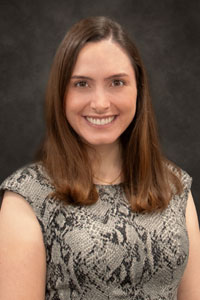
Camila Gadens Zamboni, MD
Chief Resident, PGY 5
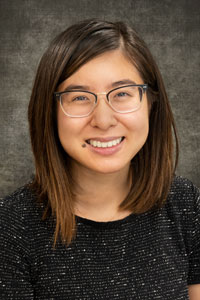
Jessica Hui, MD
Assistant Chief Resident, PGY 4

Jay Yu, MD
Assistant Chief Resident, PGY 3

Abigail Reutzel, MD
Assistant Chief Resident, PGY 2
- View our Department of Radiology Residents
Current Residents
Class of 2025

Left to right: Farris Abou-Hanna, MD; Maura Alambert, MD; Brendan Carney, DO (DR/IR); Ayca Dundar, MD; Camila Gadens Zamboni, MD; Joseph Hindman, MD; Andrew Monforton, MD; Gage Winger, MD
Class of 2026

Left to right: Bryan Bozung, MD; Benjamin Fick, MD; Brian Grieve, MD; Michael Guo, MD; Joshua Hanscom, MD (DR/IR); Jessica Hui, MD; Thomas Reith, MD; Ryan Staudte, MD
Class of 2027

Left to right: Otavio Dalla Pria, MD; Jacob Elam, MD; Sravani Mannuru, MD; Nicole Martinez, MD; Dennis Pleshkov, MD; Benjamin Walker, MD; Seth Woods, MD (DR/IR); Jay Yu, MD
Class of 2028

Left to right: Michael Farrell, MD; Brian Fu, MD; Taylor Harris, MD; Ryan Jang, MD; Abigail Reutzel, MD; Mason Vaillancourt, MD (DR/IR); Alden Wyland, MD; Nick Zacharias, MD
Radiology Match Results
The following will begin their Categorical Diagnostic Radiology Residency training in our program in July 2024:
- Ridvan Demirci—Gazi Universitesi Tip Fakultesi
- Sawyer Goetz—University of Iowa
- Danielli Matsuura—Universidade de Sao Paulo
- Bostin Svihovec—University of North Dakota
The following will begin their Advanced Diagnostic Radiology training program in July 2025:
- Aiah Alatoum—Yarmouk University
- Aaron Brake—University of Kansas
- Connor Shea—Central Michigan University
The following matched in the Diagnostic/Interventional Radiology position and will start training in the University of Iowa Health Care Surgery Department preliminary program beginning July 2024, and will join our program in July 2025:
- Talal Mourad—University of Illinois
Past Residents
2024 graduates
- Daniella Karassawa Zanoni, MD, Fellowship, Neuroradiology, University of Iowa
- Johnny Kingyon, MD, Fellowship, Neuroradiology, University of Iowa
- Aditi Patel, MD, Fellowship, Breast Imaging, Northwestern University
- Karan Rao, MD, Fellowship, Interventional Radiology, University of Pennsylvania
- Taylor Sellers, MD, Fellowship, Cardiothoracic Radiology, University of Wisconsin-Madison
- Eric Sung, MD, Fellowship, Neuroradiology, University of Iowa
- Malia Zhan, MD, Fellowship, Breast Imaging, Beth Israel Lahey Health System
2023 graduates
- Daniela Cunha, MD, Fellowship, Breast Imaging, University of Virginia
- Kimberly Ferris, MD, Fellowship, Vascular & Interventional Radiology, University of Iowa
- Joseph Giesler, MD, Fellwship, IR-ESIR, Washington University, St. Louis
- Andrew Hill, MD, Fellowship, Musculoskeletal Radiology, Washington University, St. Louis
- Tyler McDermott, MD, Musculoskeletal Radiology, University of Florida, Gainesville
- Katharine Molinarolo, MD, Fellowship, Abdominal Imaging and Intervention, University of Wisconsin School of Medicine and Public Health
2022 graduates
- Talmage Barth, MD, Fellowship, Body Imaging, University of Iowa
- Taylor Harms, MD, Fellowship, Body Imaging, University of Iowa
- Timothy Hurst, MD, Private Practice
- Matthew Hustrulid, MD, Fellowship, Neuroradiology, University of Iowa
- Bradley Kvamme, MD, Fellowship, Musculoskeletal Radiology, University of Iowa
- Sabarish Narayanasamy, MD, Faculty, University of Iowa
- Mothana Saad Eldine, MD, Fellowship, Neuroradiology, University of Iowa
- Jakub Siembida, MD, Fellowship, Cardiovascular Imaging, Massachusetts General, Harvard
- Christopher Welander, MD, Fellowship, Musculoskeletal Radiology, University of Iowa
2021 graduates
- Nandita Agarwal, MD, Fellowship, Neuroradiology, University of Iowa
- Robert Becker, MD, Fellowship, Body Imaging, Stanford University
- Simmi Deo, MD, Private Practice, Radiology Group, PCSC, Davenport, Iowa
- Nicholas Fain, MD, Fellowship, Neuroradiology, University of Iowa
- Atsuhiko Handa, MD, Fellowship, Pediatric Radiology, Boston Children's Hospital/Harvard
- Renato Ferreira da Silva, MD, Fellowship, Neuroradiology, University of Iowa
- Chris Welder, MD, Fellowship, Cardiovascular and Thoracic Radiology, University of Iowa
2020 graduates
- Nour Aly, MBBS, Fellowship, Neuroradiology, University of California, San Diego
- Abel Belay, MD, Fellowship, Interventional Radiology, University of Iowa
- Jared Hodgson, MD, Fellowship, Musculoskeletal Radiology, University of Iowa
- Jaclyn Keller, MD, Fellowship, Breast Imaging, University of Iowa
- Michelle Ouyang, MD, Fellowship, Body Imaging, University of Iowa
- Mitesh Patel, MD, Fellowship, Neuroradiology, University of Washington, Seattle
- Ambur Reddy, MD, Fellowship, Body Imaging, University of Iowa
2019 graduates
- Muhammad Abdul-Wahab, MD, Fellowship, Neuroradiology, Harvard University, Beth Israel Deaconess Medical Center (BIDMC)
- Islam Elhelf, MBBCh, Fellowship, Interventional Radiology, Harvard University, Beth Israel Deaconess Medical Center (BIDMC)
- Alex Essenmacher, MD, General Radiologist, Langley Air Force Base
- Sami Faruqui, MD, Fellowship, Musculoskeletal Radiology, University of Wisconsin - Madison
- Trevin Hayman, MD, Fellowship, Abdominal Imaging and Intervention, University of Wisconsin - Madison
- Michael Lucin, MD, Fellowship, Pediatric Radiology, University of Iowa
- Harrison March, MD, Fellowship, Neuroimaging, Oregon Health and Science University
- Umber Shafique, MBBS, Fellowship, Neuroradiology, Yale University
2018 graduates
- Girish Bathla, MBBS, Faculty, Neuroradiology, University of Iowa
- Adam Bryant, MD, Fellowship, Neuroradiology, University of Iowa
- Joel Dennhardt, MD, Fellowship Neuroradiology, University of Iowa
- Antony Hayes, MD, Fellowship, Interventional Radiology, Duke University
- Michael Kwofie, MD, Fellowship, Neuroradiology, University of Iowa
- Shihong Li, MD, Fellowship, Interventional Radiology, Emory University
- Prashant Nagpal, MD, Faculty, Cardiovascular/Chest Radiology, University of Iowa
- Ehab Saad Aldin, MD, Fellowship, Interventional Radiology, University of Nebraska
- Shafik Wassef, MBBCh, Fellowship, Breast Imaging, Magee-Womens Hospital of UPMC
2017 graduates
- Serine Baydoun, MD, Fellowship, Breast Imaging, University of Texas SW
- Michaelangelo Fuortes, MD, Fellowship, Neuroradiology, University of Iowa
- Joseph Gastala, MD, Fellowship, Neuroradiology, University of Iowa
- Adam Liudahl, MD, Fellowship, Neuroradiology, University of Iowa
- Steven Morales, MD, Fellowship, Interventional Radiology, Pennsylvania State University
- Simon Roh, MD, Fellowship, Interventional Radiology, Cornell University
- Charmi Vijapura, MD, Fellowship, Breast Imaging, Harvard Massachusetts General Hospital
2016 graduates
- Mohammad Amarneh, MD, Fellowship, Pediatric Radiology, University of Iowa
- Eric Ericson, MD, Fellowship, Interventional Radiology, Northwestern University
- Hussein Kekhia, MD, Fellowship, Musculoskeletal Radiology, University of Iowa
- Nathan Miller, MD, Fellowship, Body Imaging, UT Health Science Center - San Antonio
- Jason Mueller, MD, Fellowship, Neuroradiology, University of Iowa
- Derek Savells, MD, Fellowship, Neuroradiology, University of Iowa
- Nicholas Turman, MD, Fellowship, Interventional Radiology, University of Florida
- Mark Van Tassell, MD, Fellowship, Neuroradiology, University of Iowa
- Joel Ziegelbein, MD, Fellowship, Neuroradiology, University of Iowa
2015 graduates
- Sarah Averill, MD, Fellowship, Body Imaging, University of Wisconsin - Madison
- Duy Bui, MD, Fellowship, Interventional Radiology, University of California - Davis
- Eric Carolan, MD, Fellowship, Neuroradiology, Mayo Clinic
- Umar Chaudhry, MBBS, Fellowship, Neuroradiology, Northwestern University
- Aaron Jones, MD, Fellowship, Neuroradiology, University of Iowa
- Lillian Lai, MD, Fellowship, Pediatric Radiology, Stanford University
- Leandro Leite, MD, Fellowship, Neuroradiology, Brigham and Women's Hospital
- Marius Pakalniskis, MD, Fellowship, Musculoskeletal, University of Washington
- Lee Rachakonda, MD, Fellowship, Neuroradiology, University of Iowa
2014 graduates
- John Kim, MD, Fellowship, Neuroradiology, Brigham and Women's Hospital
- Christopher Luty, MD, Fellowship, Neuroradiology, University of Iowa
- James Miller, MD, Private Practice
- Brendan O'Shea, MD, Fellowship, Neuroradiology, University of Iowa
- Fabiana Policeni, MD, Fellowship, Breast Imaging, University of Iowa
- Takashi Shawn Sato, MD, Fellowship, Pediatric Imaging/Neuroradiology, University of Iowa
- Casey Swenson, MD, Fellowship, Neuroradiology, University of Iowa
2013 graduates
- Seth Anderson, DO, Fellowship, Neuroradiology, University of Iowa
- Tariq Balawi, MD, Fellowship, Musculoskeletal, University of Iowa
- Edwin Butler, MD, Private Practice
- Sarah German, MD, Residency, Nuclear Medicine, University of Iowa
- Christine Walsh, MD, Fellowship, Breast Imaging, University of Iowa
- Catie Metz, MD, Fellowship, Body Imaging, University of Iowa
- Janet Pollard, MD, Fellowship, Body Imaging, University of Iowa
- Mohammad Sarawan, MBBS, Fellowship, Interventional Radiology, Cleveland Clinic
- David Zander, MD, Fellowship, Neuroradiology, Brigham and Women's Hospital
2012 graduates
- Saad Ali, MBBS, Fellowship, Neuroradiology, University of California - San Francisco
- David De Bruin, MD, Fellowship, Neuroradiology, University of Iowa
- M. Cristian Dobre, MD, Fellowship, Neuroradiology, Stanford University
- Tamer Ghosheh, MD, Fellowship, Musculoskeletal, University of Iowa
- Robert Heninger, MD, Private Practice
- Jeffrey Meier, MD, Fellowship, Body Imaging, University of California - San Francisco
- Warren Spencer, MD, Fellowship, Musculoskeletal, University of Iowa
- James Stecher, MD, Fellowship, Musculoskeletal, University of Iowa
2011 graduates
- Aaron D. Berg, MD, Fellowship, Neuroradiology, University of Iowa
- Justin E. Boatsman, MD, Fellowship, Breast Imaging, University of Iowa
- Christopher W. Colling, MD, Fellowship, Musculoskeletal, University of Iowa
- Todd L. Ebbert, MD, Fellowship, Neuroradiology, University of Iowa
- Brian A. Fletcher, MD, Fellowship, Neuroradiology, University of Iowa
- Joshua H. Larson, MD, Fellowship, Body Imaging, University of Iowa
- Ryan D. Reynolds, MD, Fellowship, Pediatric Radiology, University of Iowa
2010 graduates
- Janet Dubois, MD, Fellowship, Pediatric Radiology, University of Iowa
- Wesley Ferley, MD, Fellowship, Neuroradiology, University of Iowa
- Ameera Ismail, MD, Fellowship, Neuroradiology, University of Iowa
- Joseph Jordahl, MD, Private Practice
- Dean McNaughton, MD, Fellowship, Vascular Interventional, University of Arizona
- Robert Post, MD, Fellowship, Musculoskeletal, University of Iowa
- Brianne Seberger, MD, Fellowship, Breast Imaging, University of Iowa
- Paul Wheeler, MD, Fellowship, Neuroradiology, University of Iowa
2009 graduates
- Randy Anderson, MD, Private Practice
- Ahmad Izard, MD, Fellowship, Neuroradiology, University of Iowa
- Roxana Leinbach, MD, Private Practice
- Kevin Llewellyn, MD, Fellowship, Neuroradiology, University of Iowa
- Nita Parekh, MD, Fellowship, Neuroradiology, University of Iowa
- Matthew Peterson, MD, Fellowship, Neuroradiology, University of Iowa
- Andrew Wu, MD, Fellowship, Musculoskeletal, University of California - San Francisco
- Limin Yang, MD, PhD, Fellowship, Breast Imaging, University of Iowa
2008 graduates
- Steve Burke, MD, Fellowship, Chest Imaging, University of Iowa
- Mohammad Asif Dogar, MD, Private Practice
- Jeffrey Flermoen, MD, Private Practice
- Roopa Goswami, MD, Private Practice
- Joshua Lucas, MD, Private Practice
- Lee Marshall, MD, Fellowship, Neuroradiology, Duke University
- Rakesh Patel, MD, Fellowship, Musculoskeletal, University of California - San Diego
2007 graduates
- Eve D. Clark, MD, Fellowship, Body Imaging, University of Iowa
- Wei H. Fang, MD, Fellowship, Body Imaging, University of Iowa
- Bradley K. Hammett, MD, Fellowship, Musculoskeletal, University of Iowa
- Brenton L. Harris, MD, Fellowship, Neuroradiology, University of Iowa
- Anietie E. Okon, MD, Fellowship, Musculoskeletal, University of Iowa
- Saher S. Sabri, MBBS, Fellowship, Vascular Interventional, University of Virginia
- Derik T. Weldon, MD, Fellowship, Neuroradiology, University of Iowa
- J. Dawson Wolfe, MD, Fellowship, Neuroradiology, Columbia University
2006 graduates
- Marc R. Beck, MD, Fellowship, Musculoskeletal, University of Iowa
- Mehul M. Doshi, MD, Fellowship, Musculoskeletal, University of Iowa
- Andrew N. Ellingson, MD, Fellowship, Neuroradiology, University of Iowa
- Earl B. Maes, MD, Fellowship, Musculoskeletal, University of Iowa
- Joshua M. McDonald, MD, Fellowship, Body & Musculoskeletal Imaging, Indiana University Hospital
- Kim M. Olsen, MD, Fellowship, Mammography, Brigham & Women's Hospital
- Adnan A. Qalbani, MD, Fellowship, Body Imaging, University of Illinois, Chicago
- David J. Rideout, MD, Fellowship, Musculoskeletal, University of Iowa
2005 graduates
- Khalil Abu-Zahra, MBBS, Fellowship, Neuroradiology, University of Pennsylvania
- Matthew J. Berst, MD, Fellowship, Musculoskeletal, University of Iowa
- Eric B. Callaghan, MD, Fellowship, Musculoskeletal, University of Iowa
- Michael P. Dixon, MD, Private Practice
- Theodore S. Donta, MD, PhD, Fellowship, Neuroradiology, University of Iowa
- Colin J. O’Brien, MD, Fellowship, Neuroradiology, Duke University
- Maheen Rajput, MD, Fellowship, Musculoskeletal, University of Iowa
Contact Us
Interim Residency Program Coordinator
Megan Raitt, BS
Department of Radiology
University of Iowa Health Care
200 Hawkins Drive, Iowa City, IA 52242-1091
Tel: 1-319-678-7215
megan-raitt@uiowa.edu
For verification inquiries please contact Amber Thoma at amber-thoma-1@uiowa.edu.
Residency Program Director
Catherine Metz, MD
Department of Radiology
University of Iowa Health Care
200 Hawkins Drive, Iowa City, IA 52242-1091
Tel: 1-319-353-7123
catie-metz@uiowa.edu
Residency Associate Program Director - Recruitment Director
Shawn Sato, MD
Department of Radiology
University of Iowa Health Care
200 Hawkins Drive, Iowa City, IA 52242-1091
Tel: 1-319-356-7980
shawn-sato@uiowa.edu
Residency Associate Program Director - Curriculum Director
Michael Kwofie, MD, PhD
Department of Radiology
University of Iowa Health Care
200 Hawkins Drive, Iowa City, IA 52242-1091
Tel: 1-319-384-8795
michael-kwofie@uiowa.edu
Residency Associate Program Director - Projects Director
Theodore Donta, MD, PhD
Department of Radiology
University of Iowa Health Care
200 Hawkins Dr., Iowa City, IA 52242-1091
Tel: 1-319-678-8872
theodore-donta@uiowa.edu
Residency Associate Program Director - Solutions Director
Catherina Zadeh, MD, FRCR
Department of Radiology
University of Iowa Health Care
200 Hawkins Dr., Iowa City, IA 52242-1091
Tel: 1-319-467-5463
Email: catherina-zadeh@uiowa.edu
